An Introduction to Japanese Zen Gardens
Explore the Zen roots and symbolism of these serene landscapes, and pick up some tips on how to make your own
Characterised by rock formations that mimic water and other natural features, Karesansui, literally ‘dry landscape’ or stone gardens, are the epitome of Japanese gardening. Also known as Zen gardens outside of Japan, they have a rich history dating back to the twelfth century. Yet today’s stone gardens are not just stagnant copies of traditional garden architecture, but a constantly evolving expression of Zen thought, found everywhere from temple grounds to museums and even modern houses. Learn more about the origins of these tranquil, thought-provoking landscapes, and get inspired to build your own.
Zen teachings
The first factor was the spread of Zen thought throughout Japan. This school of Buddhism was transmitted to Japan from China, and became widespread in Japan from the Kamakura period to the Edo period (from the late 12th to early 16th centuries).
The first fully-fledged stone garden was created in Kyoto’s Saihoji Zen temple by the famous gardener-monk Muso Soseki. His work holds a very important place in the history of Japanese gardening. Muso was summoned to reconstruct the nearly-forsaken Saihoji – formerly dedicated to another school of Buddhism, Pure Land Buddhism – as a Zen temple. The reconstruction entailed numerous changes, including modifications to the garden. Muso decided to create a stone garden as a place for monks to practise Zen: rocks hold a special place in Zen thought as expressions of the force of nature, and one Zen practice involves the contemplation of rocks as a way of becoming aware of that which is invisible.
2. Bonkei and Sansui-ga
The second factor that led to the development of the modern-day stone garden was the influence of the bonkei and sansuiga art forms. Bonkei, or ‘tray scenery’, is the practice of arranging sand, stone, and miniature plants on a tray to create a miniature replica of natural scenery. It is from bonkei that the famous Japanese bonsai tradition evolved, as well. Such trays were displayed at celebrations as decoration for the interior of a house. Sansuiga, on the other hand, was a style of landscape painting that was popular among Zen priests. Both of these art forms influenced the aesthetics and style of composition employed in stone gardens.
How to Create a Zen-Inspired Home
The first factor was the spread of Zen thought throughout Japan. This school of Buddhism was transmitted to Japan from China, and became widespread in Japan from the Kamakura period to the Edo period (from the late 12th to early 16th centuries).
The first fully-fledged stone garden was created in Kyoto’s Saihoji Zen temple by the famous gardener-monk Muso Soseki. His work holds a very important place in the history of Japanese gardening. Muso was summoned to reconstruct the nearly-forsaken Saihoji – formerly dedicated to another school of Buddhism, Pure Land Buddhism – as a Zen temple. The reconstruction entailed numerous changes, including modifications to the garden. Muso decided to create a stone garden as a place for monks to practise Zen: rocks hold a special place in Zen thought as expressions of the force of nature, and one Zen practice involves the contemplation of rocks as a way of becoming aware of that which is invisible.
2. Bonkei and Sansui-ga
The second factor that led to the development of the modern-day stone garden was the influence of the bonkei and sansuiga art forms. Bonkei, or ‘tray scenery’, is the practice of arranging sand, stone, and miniature plants on a tray to create a miniature replica of natural scenery. It is from bonkei that the famous Japanese bonsai tradition evolved, as well. Such trays were displayed at celebrations as decoration for the interior of a house. Sansuiga, on the other hand, was a style of landscape painting that was popular among Zen priests. Both of these art forms influenced the aesthetics and style of composition employed in stone gardens.
How to Create a Zen-Inspired Home
The Further Evolution of Stone Gardens
These two factors were what led to the development of the current type of stone garden. This new form also fit well with the advent of the wabi-sabi aesthetic, or the appreciation of that which is imperfect or incomplete. Stone gardens therefore began to be adopted outside of Zen temples as even samurai and merchants began creating their own. However, around the 18th century, in the middle of the Edo period (1603–1867), naturalistic gardens that favoured living plants stole the spotlight for a time, meaning that fewer stone gardens were built.
They experienced a resurgence in the Showa period (20th century), when gardener and garden historian Mirei Shigemori created over two hundred stone gardens, which are deemed to be timeless and ever-modern. Despite holding to the traditional rules of stone arrangement, his gardens weren’t blind imitations of the old ways: instead, he combined his own innovations and modern aesthetics with traditional forms.
These two factors were what led to the development of the current type of stone garden. This new form also fit well with the advent of the wabi-sabi aesthetic, or the appreciation of that which is imperfect or incomplete. Stone gardens therefore began to be adopted outside of Zen temples as even samurai and merchants began creating their own. However, around the 18th century, in the middle of the Edo period (1603–1867), naturalistic gardens that favoured living plants stole the spotlight for a time, meaning that fewer stone gardens were built.
They experienced a resurgence in the Showa period (20th century), when gardener and garden historian Mirei Shigemori created over two hundred stone gardens, which are deemed to be timeless and ever-modern. Despite holding to the traditional rules of stone arrangement, his gardens weren’t blind imitations of the old ways: instead, he combined his own innovations and modern aesthetics with traditional forms.
Symbolism of Stone Gardens
Stone gardens are rich in symbolism, many reflecting Zen thought and ancient Chinese philosophies. It is necessary to be able to read this further layer of meaning in order to fully appreciate these gardens as more than just a collection of rocks.
For example, many gardens include the so-called Horai-jima, a representation of the unreachable island of immortals from Chinese legend – the tall stone in this photo. Smaller Tsuru-jima (crane islands) and Kame-jima (turtle islands), which symbolise longevity, are often built in its immediate proximity (not pictured).
Small stones that represent ‘treasure ships’, themselves symbolic of luck and prosperity, are usually arranged to point with one of their ends toward the island of immortals, and are often seen in such gardens as well. They are either heading for the island to claim its treasures or heading home with their spoils. Their load is indicated by their height above the sand waves.
On the other hand, a Ryumon-baku or ‘Dragon Gate Waterfall’ (see photo below), which has its roots in a Chinese legend about the eponymous waterfall located on the Yellow River, is a known Zen symbol. According to legend, any carp – a species that can hardly jump into the air at all – that managed to climb the waterfall would immediately turn into a dragon and soar into the sky. This is also the origin of the iconic Japanese koinobori (carp streamers). Zen teachings use this story to explain the attitude a practitioner needs to have in order to achieve enlightenment.
In the photo below, the sand represents the Yellow River, the ripples represent the waterfall, and the rock that juts out represents the carp. This symbol is incorporated in the Saihoji garden as well; there, these rocks serve as a place for seated Zen meditation.
Stone gardens are rich in symbolism, many reflecting Zen thought and ancient Chinese philosophies. It is necessary to be able to read this further layer of meaning in order to fully appreciate these gardens as more than just a collection of rocks.
For example, many gardens include the so-called Horai-jima, a representation of the unreachable island of immortals from Chinese legend – the tall stone in this photo. Smaller Tsuru-jima (crane islands) and Kame-jima (turtle islands), which symbolise longevity, are often built in its immediate proximity (not pictured).
Small stones that represent ‘treasure ships’, themselves symbolic of luck and prosperity, are usually arranged to point with one of their ends toward the island of immortals, and are often seen in such gardens as well. They are either heading for the island to claim its treasures or heading home with their spoils. Their load is indicated by their height above the sand waves.
On the other hand, a Ryumon-baku or ‘Dragon Gate Waterfall’ (see photo below), which has its roots in a Chinese legend about the eponymous waterfall located on the Yellow River, is a known Zen symbol. According to legend, any carp – a species that can hardly jump into the air at all – that managed to climb the waterfall would immediately turn into a dragon and soar into the sky. This is also the origin of the iconic Japanese koinobori (carp streamers). Zen teachings use this story to explain the attitude a practitioner needs to have in order to achieve enlightenment.
In the photo below, the sand represents the Yellow River, the ripples represent the waterfall, and the rock that juts out represents the carp. This symbol is incorporated in the Saihoji garden as well; there, these rocks serve as a place for seated Zen meditation.
Water Patterns
A sand pattern used to represent waves is called ‘samon‘ (ripple patterns on the sand). This stems from the tradition during the Heian era (794–1192) of covering sacred spaces with white sand. Under the influence of bonkei, this sand came to be arranged in the form of waves to symbolise water.
Various patterns of ripples are used to symbolise river or ocean waters. Even in the same ocean you might encounter both big waves and mere ripples on the water’s surface. Although the large stones are usually more eye-catching, you can entertain yourself by contemplating the sand patterns and trying to guess what kind of waters they represent.
The patterns are usually drawn by a local priest using a rake or a broom. It is said that Muso did not leave even a speck of dust in his own garden. He believed that the habit of sweeping a garden serves to cleanse the mind of worldly thoughts. Likewise, drawing ripples in the sand is useful for calming and purifying your mind.
Browse gardens with water features
A sand pattern used to represent waves is called ‘samon‘ (ripple patterns on the sand). This stems from the tradition during the Heian era (794–1192) of covering sacred spaces with white sand. Under the influence of bonkei, this sand came to be arranged in the form of waves to symbolise water.
Various patterns of ripples are used to symbolise river or ocean waters. Even in the same ocean you might encounter both big waves and mere ripples on the water’s surface. Although the large stones are usually more eye-catching, you can entertain yourself by contemplating the sand patterns and trying to guess what kind of waters they represent.
The patterns are usually drawn by a local priest using a rake or a broom. It is said that Muso did not leave even a speck of dust in his own garden. He believed that the habit of sweeping a garden serves to cleanse the mind of worldly thoughts. Likewise, drawing ripples in the sand is useful for calming and purifying your mind.
Browse gardens with water features
Stone Gardens and Modern Households
Stone gardens have experienced a boom in popularity around the world. They are less popular within Japan itself, though in recent years even the younger generations are turning their attention back towards Japanese traditional culture.
As long as you don’t think too big, making a stone garden isn’t an impossible task. Why not create a pleasant place where you can take a moment to rest from your busy life and calm your soul? Don’t worry about breaking some kind of rules in creating your own: these gardens are meant to change with the flow of time and do not have to be copies of historic gardens. Their cultural legacy is to create something that touches a contemporary viewer’s soul, rather than just blindly copying the past.
Stone gardens have experienced a boom in popularity around the world. They are less popular within Japan itself, though in recent years even the younger generations are turning their attention back towards Japanese traditional culture.
As long as you don’t think too big, making a stone garden isn’t an impossible task. Why not create a pleasant place where you can take a moment to rest from your busy life and calm your soul? Don’t worry about breaking some kind of rules in creating your own: these gardens are meant to change with the flow of time and do not have to be copies of historic gardens. Their cultural legacy is to create something that touches a contemporary viewer’s soul, rather than just blindly copying the past.
Although this garden has no grand stonework to boast of, it incorporates sand ripples, which are a major part of stone garden culture. The pattern is expressed by tiles laid out in the sand, so it is easy to maintain because the pattern does not need to be drawn manually. Instead of stones, a slight slope adds volume to the garden and express a view of nature. Planting trees around it in a pattern that reflects how they might grow in a forest makes the garden look perfectly natural.
It is possible to create grand-looking scenery even in a confined space by just using small lanterns and stones. Features where stones represent ponds are called kareike, dry ponds. One of their merits is that they are easier to create and maintain than ponds with real water. Adding waterside plants, such as sweet flags, makes the illusion even more convincing.
So Your Garden Style Is: Japanese
So Your Garden Style Is: Japanese
Simple, free from luxury and ostentation, stone gardens beam with an irresistible charm. Gardens which have been used for centuries for practising Zen might be just what we need in the modern day to remind us to take an occasional moment from our busy lives and reflect on ourselves.
Tell us
If you enjoyed this story, like it, bookmark it, save the photos and share your thoughts below. Join the conversation.
More
Read more garden stories
Tell us
If you enjoyed this story, like it, bookmark it, save the photos and share your thoughts below. Join the conversation.
More
Read more garden stories




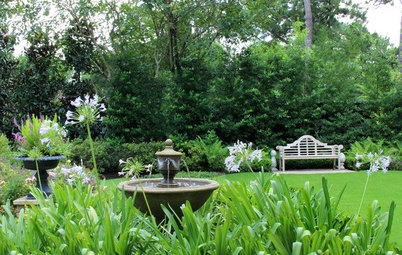
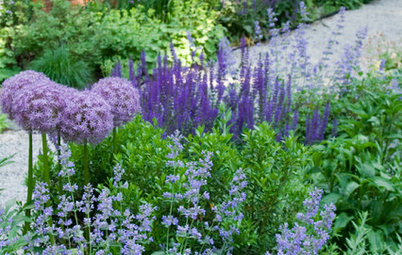

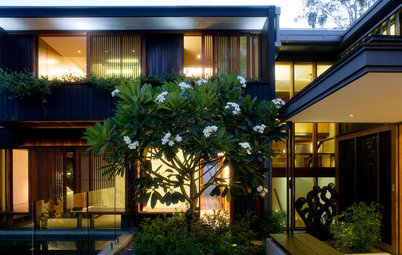
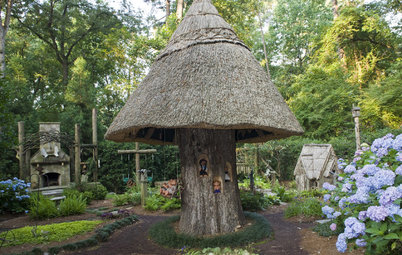
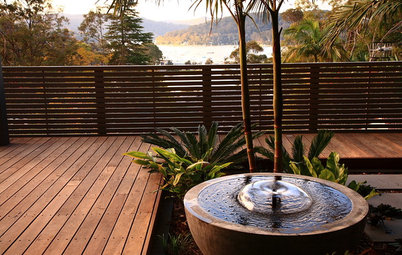

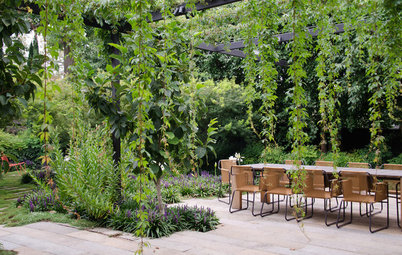
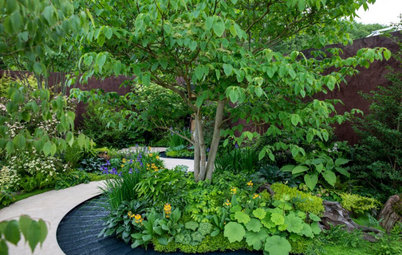
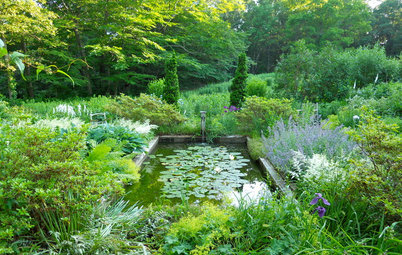
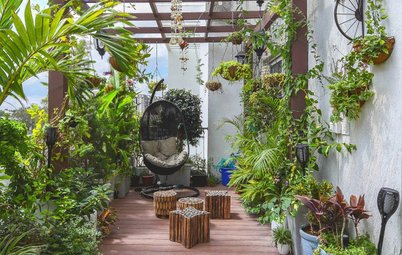
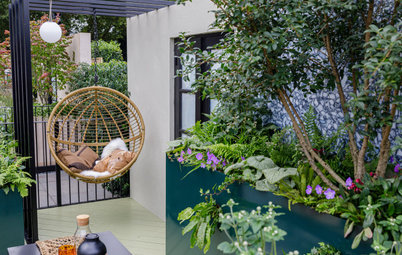
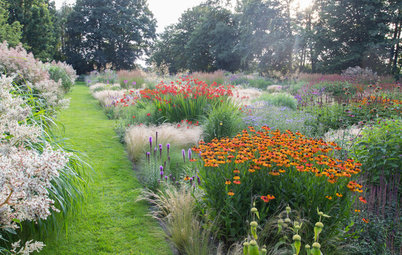
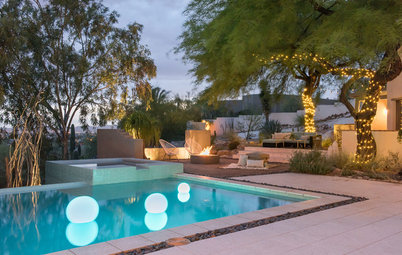
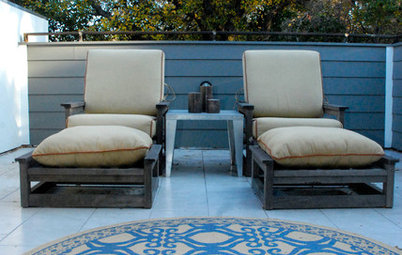

The oldest known description of stone gardens is found in the Sakuteiki, the Records of Garden Making, a text written in the late Heian period (11th century). It reads, “A garden of arranged stones that has neither a pond nor a stream shall be called a dry landscape garden, one that expresses a water-filled natural landscape without the actual presence of water.”
We don’t know exactly what this kind of garden would have looked like at the time, as none from the late Heian period are still extant. However, later Japanese gardening practices were heavily influenced by Zen philosophy, which was not yet widespread in Japan at the time when the Sakuteiki was written. So, the gardens it describes may have been somewhat different from their modern incarnations. Even so, it is clear that the key feature of a stone garden – the idea of ‘seeing’ water in a dry landscape – already existed. Two factors influenced their further evolution into their modern forms.